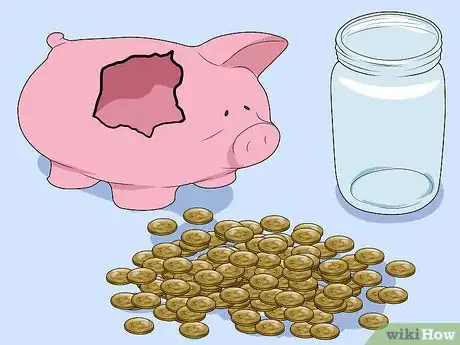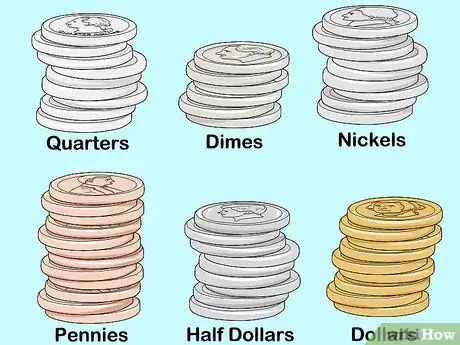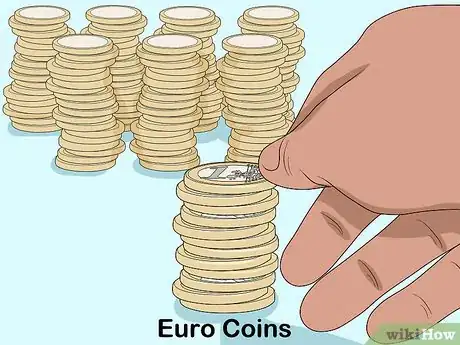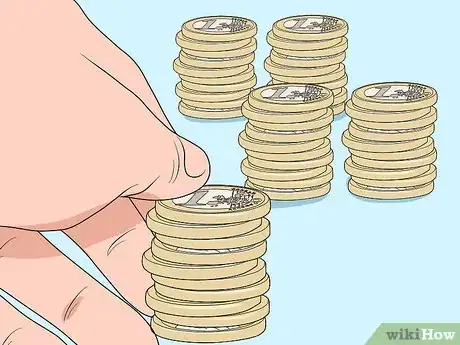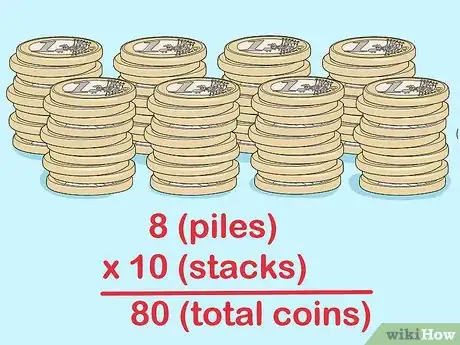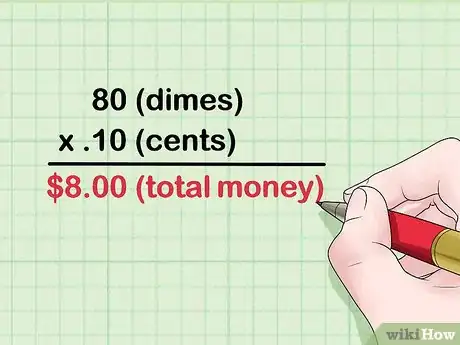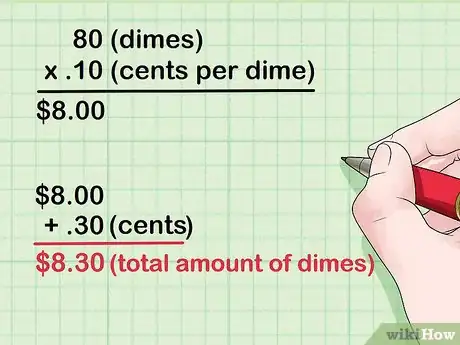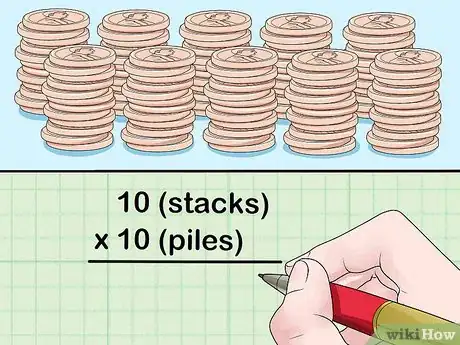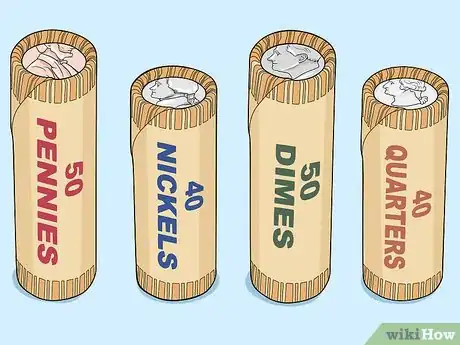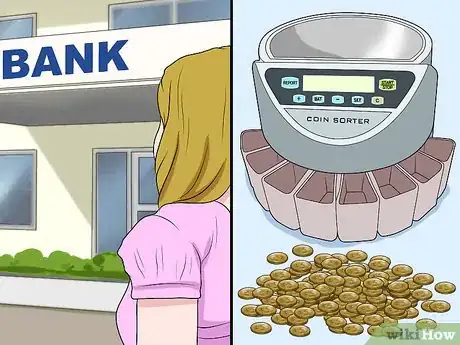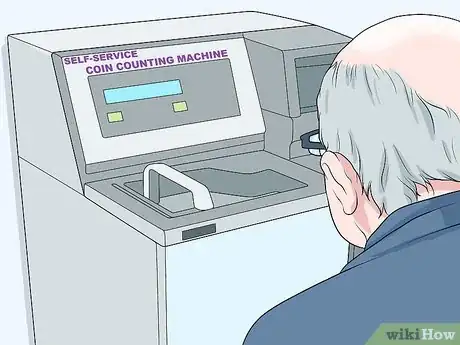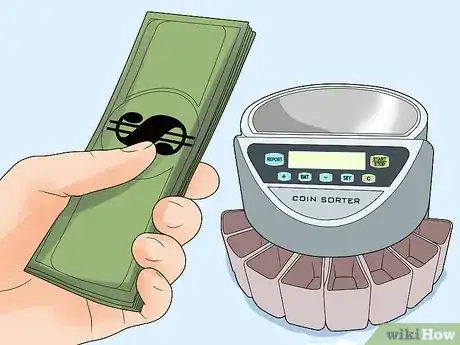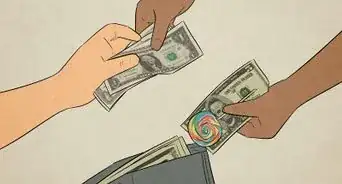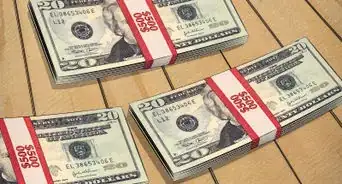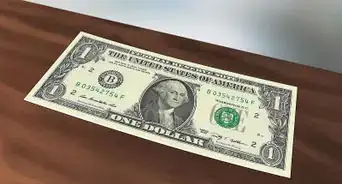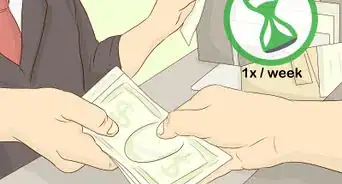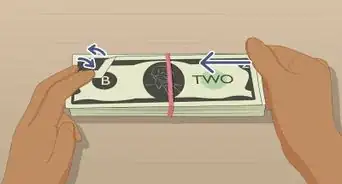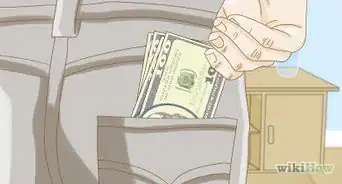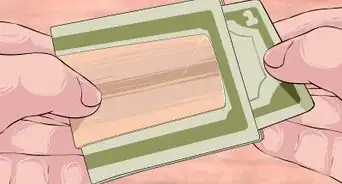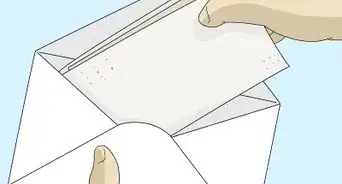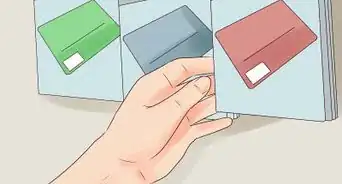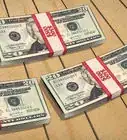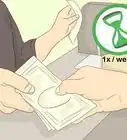This article was co-authored by wikiHow staff writer, Amber Crain. Amber Crain has been a member of wikiHow’s writing staff for the last six years. She graduated from the University of Houston where she majored in Classical Studies and minored in Painting. Before coming to wikiHow, she worked in a variety of industries including marketing, education, and music journalism. She's been a radio DJ for 10+ years and currently DJs a biweekly music program on the award-winning internet radio station DKFM. Her work at wikiHow supports her lifelong passion for learning and her belief that knowledge belongs to anyone who desires to seek it.
This article has been viewed 40,022 times.
Learn more...
If you have a jar of loose change, you may want to count it up to find out how much money you have. You can do it by hand by separating the coin types, adding up the total for each coin type, then adding those totals together. You can also save yourself some time by using a coin counting machine at a local bank branch. Some grocery stores have self-service machines, but expect to pay a fee to use them. If you have loose change frequently, consider buying a small coin-sorter to use at home.
Steps
Counting Coins by Hand
-
1Gather all of your coins together. Empty your change jars, pants pockets, coin purse, piggy bank, and any other places you have holding your coins. If you want to be really thorough, check between the couch cushions and in your dresser drawers as well.
-
2Separate the coins into piles based on their type. Create individual piles for each coin type. All coins worth a certain amount should be grouped together. Give yourself plenty of room so you can keep the groups separated from each other.
- For instance, if you are using US coins, you should have a pile of quarters, a pile of dimes, a pile of nickels, and a pile of pennies, as well as piles for half-dollar and dollar coins if you have any.
Advertisement -
3Work with one coin type at a time. Pull one pile of a particular coin type in front of you. Put the rest of your change aside for now. You'll get to those coin types later. For example, if you're working with euros, you should have 8 separate piles of coins -- 1 pile for each coin type. Set 7 of those piles aside and place the other pile in front of you. Count one coin type at a time.
-
4Create stacks of 10 coins each. Start creating short vertical piles, with each stack having 10 coins in it. After stacking all of them, you may not have enough to make a final stack of 10; that's fine. Set the extras aside.
- Stacks of 10 work best if you have a lot of coins. 10 is an easy number to count and multiply, so it makes a large amount of coins manageable. If you aren't working with a lot of coins, try making stacks of 5 instead.
- If you're working with very few coins (less than 10), just make 1 stack and count the exact number of coins in that stack. Write that number down.
-
5Count the number of stacks you have and multiply by 10. Look at your stacks of that coin type and count how many full stacks you have. Once you have that number, multiply it by 10. That is how many of those coins you have in total.
- For example, say you have 8 stacks of one coin type.
- Multiply 8 x 10 = 80. You have 80 of those coins total.
-
6Multiply the total number of coins you have by the coin's value. The number you get is the total amount of money you have in that coin type. Once you have the final amount, write it down on a piece of paper.[1]
- Multiply 80 coins x coin worth = total amount of money you have in that kind of coin.
- For example, if you are working with US dimes: 80 dimes x .10 cents = $8.00.
-
7Factor in the leftover coins that didn't make a full stack of 10. If you have a few coins that did not fit into a stack of 10 for that coin type, don't forget to factor the worth of those coins into your final amount.
- For example, if you have 8 stacks of dimes: 80 dimes x .10 cents per dime = $8.00.
- If you have 3 extra dimes, add that amount: $8.00 + .30 cents = $8.30. This is the total amount of money you have in dimes.
-
8Repeat this process for the other coin types you have. Make stacks of 10, count the stacks, then multiply by 10. Take that number and multiply it by how much that kind of coin is worth. Write down the final amount for each of the different coin types.
- For example, if you have 3 stacks of quarters: 3 stacks x 10 coins per stack = 30 quarters total. 30 quarters x .25 cents per quarter = $7.50.
- If you have 2 extra quarters, add that amount: $7.50 + .50 cents = $8.00. This is the total amount of money you have in quarters.
-
9Add up the final amounts for each coin to get a total amount. Plug each coin type's final amount into a calculator. Hit the equal sign on the calculator for a final tally. That number is the total amount of money you have in change.
- For example, you have $1.53 in pennies, $2.10 in nickels, $8.30 in dimes, and $8.00 in quarters.
- Add those figures together: 1.53 + 2.10 + 8.30 + 8.00 = 19.93. The total amount of money you have in loose change is $19.93.
-
10Roll your change as you get it. To avoid counting huge piles of coins, get coin wrappers from your local bank and roll the change yourself. Roll each coin type separately by denomination. Banks require a specific number of coins per roll, depending on the coin type. Roll the coins separately according to your bank's requirements. If you aren't sure what the requirements are, ask a bank teller when you pick up the wrappers.[2]
- For example, if you're working with US coins: 50 pennies per roll, 40 nickels per roll, 50 dimes per roll, 40 quarters per roll.[3]
- Deposit the rolled change into your bank account or ask the bank teller to give you larger bills in exchange for the rolled coins.
- If your bank doesn't give out coin wrappers, you can order them online.
Using Coin Counting Machines
-
1Find a local bank with a coin counting machine. Call around to local bank branches and ask them if they have a coin counting machine at their location. If they do, ask them if you can use it, and if the service is free. Also ask them how you'll receive your money after the loose change is counted.[4]
- Some banks have coin counting machines, but only bank tellers can operate them. Others have coin counting machines, but they charge fees for using them (usually a percentage of the total amount of currency you have).
- You will usually get your total amount of currency back in larger bills.
-
2Ask a bank teller if they will process the coins for you. If your local bank branch doesn't have a self-service coin counter, bank tellers will often run the change through their coin counting machine for you. Simply bring your loose change up to the window and hand it to them.[5]
- It's best to call ahead and confirm the bank offers this service before dragging all of your change up there.
- Once the coins are counted, you will usually get your total amount of currency back in larger bills.
-
3Use a self-service coin counting machine. You can usually find these machines in busy retail spaces like grocery stores. The machine will charge a fee for the service, which is typically around 10% of your total amount of currency. The machine counts your coins, deducts the fees, and then prints out a voucher with your total amount on it. Take the voucher to a cashier to get the amount in larger bills.[6]
- Some machines offer different options that allow you to skip the processing fees. Options will vary, but usually you get your money in the form of an eCertificate or gift card for specific vendors.[7]
- Some machines allow you to skip the processing fee if you make a charitable donation with your total amount.
-
4Buy a small coin-sorting machine for home use. This convenient machine allows you to insert your loose change in real time, and it separates and stores it for you. If you have coin rolling wrappers, roll each coin type separately by denomination. Banks require a certain number of coins per roll, depending on the coin type. Be sure to follow your bank's requirements.[8]
- Deposit completed rolls into your bank account or ask the bank to give you larger bills in return.
- Some sorting machines allow you to insert pre-formed wrappers into the coin tubes, making rolling it even easier.
Community Q&A
-
QuestionHow many dimes and nickles make 50 cents?
 DonaganTop AnswererFive dimes make 50 cents. Ten nickels make 50 cents.
DonaganTop AnswererFive dimes make 50 cents. Ten nickels make 50 cents. -
QuestionHow many pennies make a dollar?
 Tom De BackerTop AnswererOne penny is one one-hundredth of a dollar, so 100 pennies make a dollar.
Tom De BackerTop AnswererOne penny is one one-hundredth of a dollar, so 100 pennies make a dollar. -
QuestionHow many dimes and nickels make two dollars?
 Wikiuser100dCommunity Answer20 dimes makes $2.00 and 40 nickels make $2.00.
Wikiuser100dCommunity Answer20 dimes makes $2.00 and 40 nickels make $2.00.
References
- ↑ http://www.enchantedlearning.com/math/money/coins/
- ↑ https://www.thepennyhoarder.com/make-money/side-gigs/spare-change-jar/
- ↑ http://www.ebay.com/gds/Your-Guide-to-Properly-Filling-and-Closing-Coin-Rolls-/10000000178589961/g.html
- ↑ http://www.wisebread.com/best-ways-to-count-and-cash-in-your-change
- ↑ https://www.custerfederal.com/CoinCounting
- ↑ http://www.wisebread.com/best-ways-to-count-and-cash-in-your-change
- ↑ https://couplemoney.com/banking/coin-jars-cashing-money/
- ↑ http://www.wisebread.com/best-ways-to-count-and-cash-in-your-change
